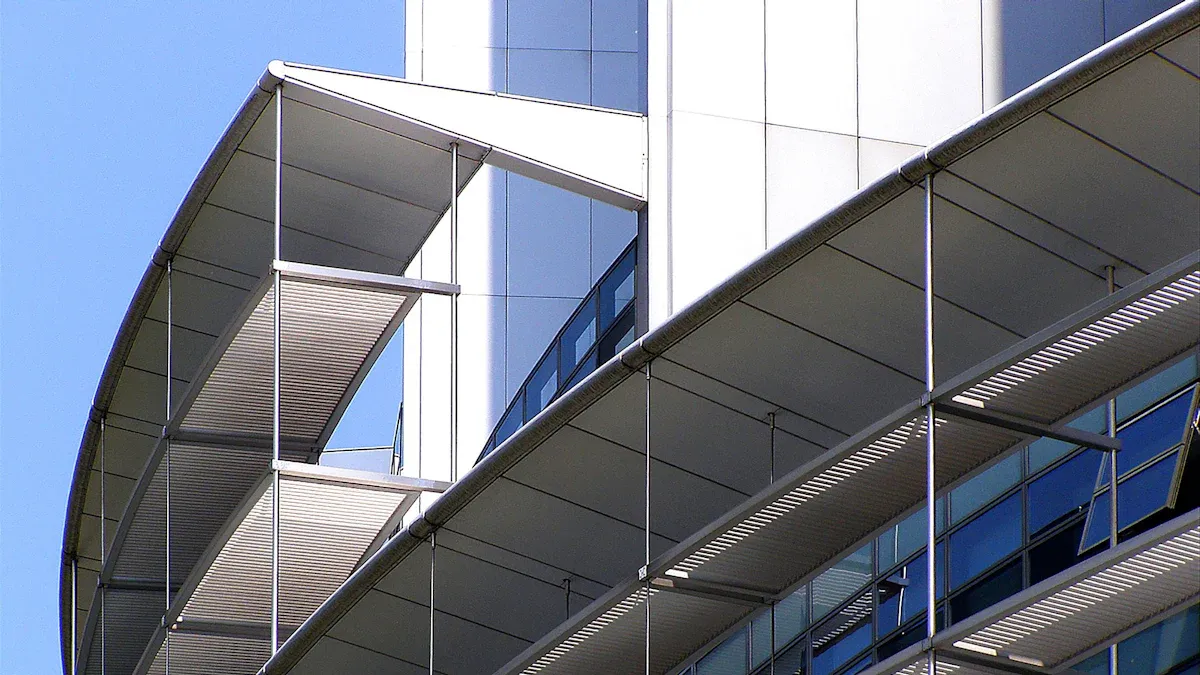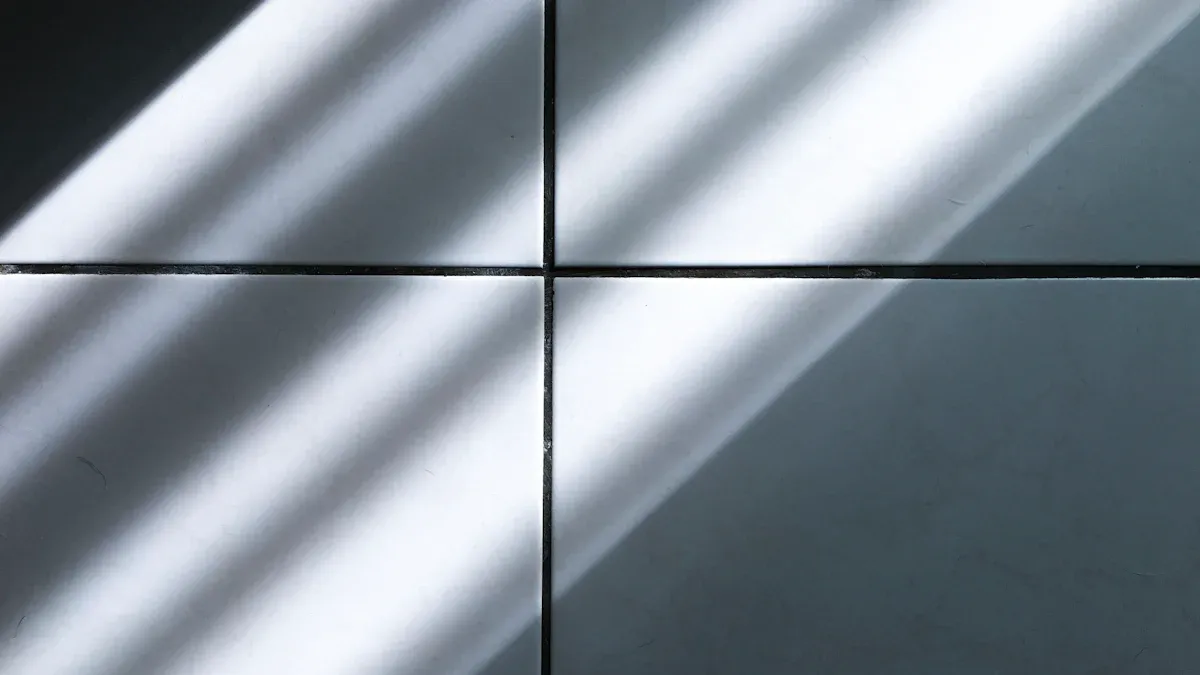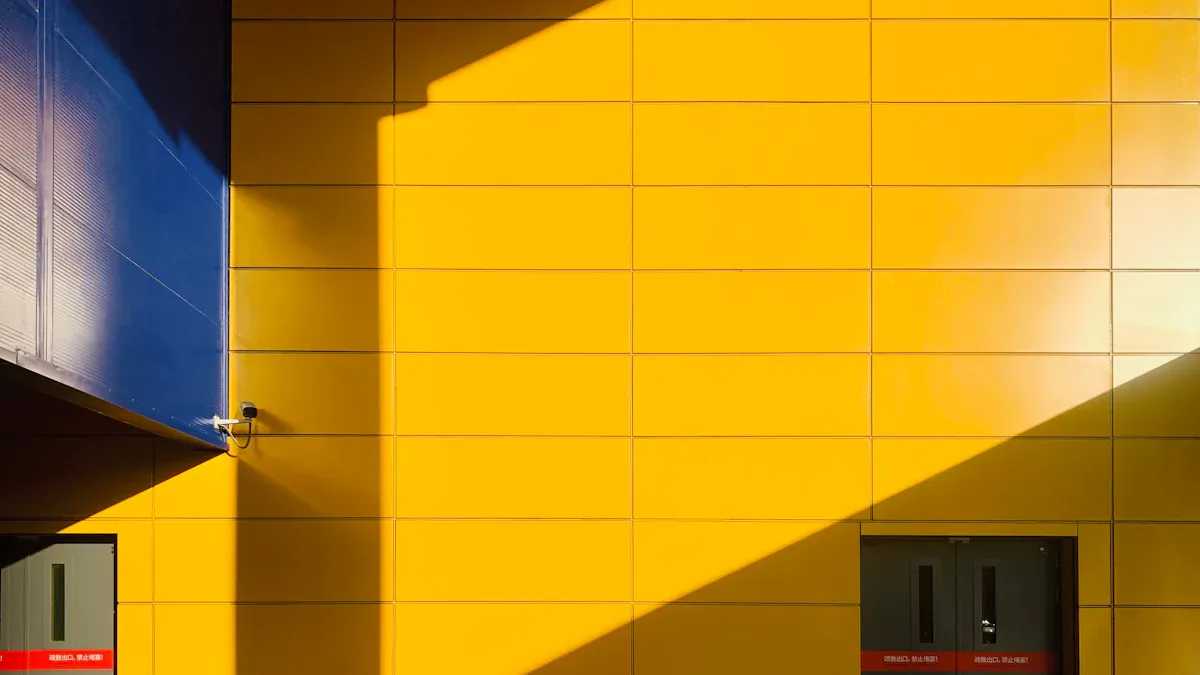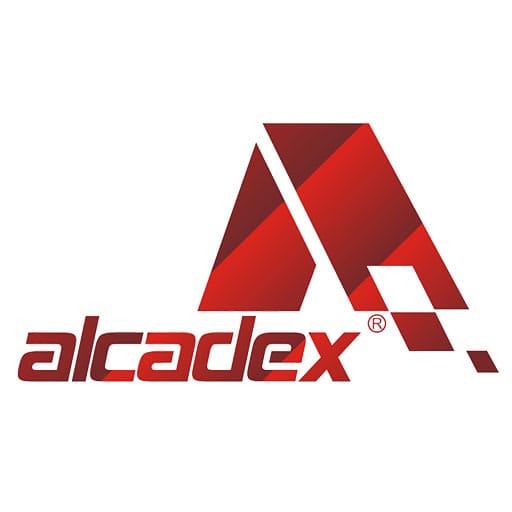
12 Sep Comparing Different ACP Cladding Systems and Their Best Uses
Table of Contents
You see aluminum composite panels on lots of new buildings today. These panels have changed how people think about cladding. ACP cladding is special because it mixes design, safety, and strength. If you pick the right ACP, your building looks nicer and lasts longer. Each system gives special benefits for every project.
Key Takeaways
Aluminum composite panels (ACP) look modern and last long. They work well for inside and outside walls.
Pick fire-rated ACP for places like schools and hospitals. This helps keep people safe from fires.
Use the right thickness of ACP sheets for your project. Thicker sheets are stronger and block more noise.
ACP cladding is easy to take care of. You only need water to clean it. You do not have to paint or seal it.
ACP is good for the environment. Aluminum can be recycled. The panels last a long time, so there is less waste.
ACP Cladding Overview
What Are Aluminum Composite Panels?
You see aluminum composite panels on lots of new buildings. These panels have two thin aluminum sheets with a core in the middle. The core is usually made of plastic or minerals. This makes the panels light but strong. The surface looks smooth and nice. Aluminum composite panels are good for cladding because they do not bend easily and can handle bad weather.
You can use aluminum composite panels for walls inside or outside. The panels come in many colors and finishes. You can pick a style that fits your building. Aluminum composite panels are easy to cut and shape. This lets you make cool designs without much trouble.
Tip: If you want your building to look modern and want easy setup, aluminum composite panels are a smart choice.
Key Features of ACP Cladding
When you check the main features of aluminum composite panels, you find many good things. ACP cladding gives you a smooth look and a neat finish. The panels do not let water in, so your building stays safe from rain. The panels are light, so you can move and install them easily.
Here are some important features you should know:
Durability: ACP lasts a long time and does not rust.
Design Flexibility: You can choose from many colors and textures.
Low Maintenance: You clean ACP with water and simple tools.
Fire Resistance: Some ACP cladding has special cores for more safety.
Cost-Effectiveness: ACP costs less than stone or wood cladding.
Feature | Benefit for You |
|---|---|
Lightweight | Easy to install |
Moisture Resistant | Keeps your building dry |
Customizable | Matches your style |
ACP cladding gives you lots of choices for your building. You get panels that look nice, last long, and save money.
Types of ACP Cladding
Standard ACP Panels
You see standard ACP panels in many buildings. These panels have a plastic core between two aluminum sheets. You get a lightweight material that resists weather and stays strong for years. Standard ACP panels work well for most projects. You can use them for both inside and outside walls. You pick from many colors and finishes, so your building looks just how you want.
Note: Standard ACP panels give you a good balance of cost and performance. You save money and still get a strong cladding solution.
Fire Rated ACP Cladding
Safety matters when you choose cladding. Fire rated ACP cladding uses a mineral core instead of plastic. This core slows down fire and keeps your building safer. You often see fire rated ACP in schools, hospitals, and tall buildings. If you want extra protection, you should pick fire rated ACP cladding.
Here are some places where fire rated ACP works best:
High-rise buildings
Hospitals
Schools
Shopping malls
Tip: Always check local building codes before you choose fire rated ACP cladding.
ACP Sheet Thickness Options
You can choose different thicknesses for ACP sheets. Thicker sheets give you more strength and better sound control. Thin sheets work well for inside walls. Most exterior projects use ACP sheets that are 4mm or 5mm thick. You should compare ACP panels by thickness before you decide.
Thickness (mm) | Best Use |
|---|---|
3 | Interior walls |
4 | Exterior walls |
5 | High-traffic areas |
When you pick the right thickness, your aluminum composite panels last longer and look better. You get the best results by matching the ACP to your project needs.
Comparing ACP Panels to Other Materials
 Image Source: pexels
Image Source: pexels
When you start comparing acp panels to other cladding materials, you see big differences in how each one performs. This quick comparison guide helps you pick the right material for your project. You want your building to look good, last long, and stay safe. Let’s look at how acp stands up against other popular choices.
ACP vs Wood
Wood gives a warm and natural look. Many people like wood for its classic style. However, wood needs a lot of care. You must paint or seal it often. Wood can rot, warp, or get bugs. It also burns easily.
Acp sheets do not have these problems. You get a modern look with many color options. Acp does not rot or attract insects. You clean it with water and a cloth. You do not need to paint or seal it. Acp is also much lighter than wood, so you can install it faster.
Tip: If you want low maintenance and long life, acp works better than wood.
Feature | ACP | Wood |
|---|---|---|
Durability | High | Medium |
Maintenance | Low | High |
Weight | Light | Heavy |
Fire Safety | Good (fire-rated) | Poor |
Color Choices | Many | Few |
ACP vs Stone
Stone looks strong and lasts a long time. You see stone on many old buildings. Stone can handle weather and does not burn. However, stone is very heavy. You need special support to hold it up. Stone costs a lot to buy and install.
Aluminum composite panels give you a similar look with less weight. You can pick finishes that look like stone. Acp costs less and goes up faster. You do not need to worry about cracks or stains. Acp cladding also resists moisture better than stone.
Note: For a stone look without the heavy cost and weight, choose acp.
ACP vs HPL
High Pressure Laminate (HPL) panels are another choice for cladding. HPL gives you many colors and patterns. It is strong and resists scratches. However, HPL can fade in sunlight. It may not handle water as well as acp.
Acp stands out because it resists fading and moisture. You get more color options with aluminium composite panels. Acp also weighs less than HPL, so you save time and money during installation.
ACP vs PVC
PVC panels are light and cheap. You see PVC in many indoor spaces. PVC does not handle heat or sun well. It can crack or fade over time. PVC also looks less premium than acp.
Acp gives you a better finish and more strength. You can use acp outside or inside. It holds up in sun, rain, and wind. You get a longer-lasting and better-looking result with acp.
ACP vs Metal
Metal cladding, like steel or solid aluminum, is strong and safe. Metal lasts a long time and resists fire. However, metal can rust if you do not care for it. Metal is also heavy and hard to shape.
Acp gives you the look of metal without the weight. You do not worry about rust or dents as much. Acp sheets are easy to cut and bend. You get more design freedom and lower costs.
ACP vs Fiber Cement
Fiber cement panels resist fire and pests. They last a long time and do not rot. However, fiber cement is heavy and can crack. You need special tools to cut it. It also costs more to install.
Acp is lighter and easier to work with. You get many colors and finishes. Acp panels do not crack or chip easily. You save time and money with acp cladding.
Remember: When you compare all these materials, acp gives you the best mix of looks, strength, and value. You get a modern finish, easy care, and many choices for your building.
ACP Cladding Applications

Exterior Applications
You see acp sheets on many building exteriors. These panels protect buildings from rain, wind, and sun. Aluminum composite panels are strong and last a long time. They work well on tall buildings because they are light. It is easy to put them up. ACP cladding keeps buildings safe and looking new for years.
There are many colors and finishes to choose from. This lets you pick any style you want. Most outside jobs use 4mm or 5mm acp sheets. Thicker panels are stronger and last longer. You get a modern look and good protection.
Tip: Use fire-rated acp sheets in tall or busy places for safety.
Interior Applications
Acp sheets are good for inside buildings too. You can use them for walls, ceilings, and furniture. ACP gives a smooth finish and lots of color choices. You can match any style you like. For most inside jobs, 3mm acp sheets are best. They are light and easy to shape.
Acp panels help you make cool designs. You can cut and bend them for special shapes. This makes your space look unique. Cleaning is easy with just water and a cloth.
Note: ACP sheets do not soak up water, so they are great for kitchens and bathrooms.
Commercial and Residential Uses
You see acp in many business buildings. Offices, malls, and stores use these panels for looks and strength. ACP cladding saves money on setup and care. You also get many finishes for branding or style.
In homes and apartments, acp sheets add a modern touch. You can use them for balconies, gates, or kitchen cabinets. ACP panels last a long time and keep their color. You do not need to paint or fix them often.
Here are some common uses:
Commercial: Office buildings, shopping malls, showrooms, hospitals
Residential: Homes, apartments, balconies, kitchens
ACP sheets give you style and performance for any building.
Real-World Examples
You can find acp panels in many famous places. Many airports use acp cladding for terminals. This gives a clean look and strong protection. Skyscrapers in cities use aluminum composite panels for outside walls. This helps with weather and saves weight.
In stores, brands use acp sheets for shop fronts and signs. The panels let you add logos and colors easily. In homes, designers use acp for modern kitchens and nice bathrooms.
Application Area | Best ACP Type | Why Use ACP? |
|---|---|---|
High-rise exteriors | 5mm, fire-rated | Safety, durability, light weight |
Interior walls/ceilings | 3mm | Easy to shape, many colors |
Commercial facades | 4mm, custom finish | Branding, cost-effectiveness |
Residential kitchens | 3mm, moisture-proof | Easy to clean, modern look |
ACP cladding gives you many design choices for every project. ACP is also good for the planet because it helps with sustainability.
ACP Performance Summary
Durability
You want your building to last. ACP gives you strong protection. These panels stand up to wind, rain, and sun. You do not have to worry about rust because the aluminum layer keeps water out. ACP sheets also resist dents and scratches. This means your walls look good for many years. When you choose aluminum composite panels, you get durability and physical resistance. You can trust these panels to keep your building safe.
Tip: Use thicker acp sheets in busy areas for extra strength.
Maintenance
You save time with acp. Cleaning is simple. Just use water and a soft cloth. You do not need special cleaners or tools. ACP sheets do not need paint or polish. The color stays bright even after years in the sun. If you see dirt, you can wipe it away fast. This low-maintenance feature makes acp a smart choice for both homes and businesses.
Here is a quick guide for caring for your acp sheets:
Wash with water every few months.
Check for damage after storms.
Avoid harsh chemicals.
Environmental Impact
You care about the planet. ACP helps you build in a green way. The aluminum in acp sheets can be recycled. This reduces waste. Many factories now use less energy to make these panels. You also use fewer resources because acp lasts a long time. When you think about environmental impact and sustainability, acp stands out. You get strong performance and help protect nature at the same time.
Feature | Benefit for You |
|---|---|
Recyclable aluminum | Less waste |
Long lifespan | Fewer replacements |
Energy-efficient making | Lower carbon footprint |
You have many choices when picking ACP cladding. Standard panels work well for most walls. Fire-rated ACP gives extra safety in busy places. Thicker sheets last longer outside. Aluminum composite panels help you save money and keep your building looking fresh.
Tip: Always match the ACP type to your project’s needs and local rules. Check the environment and use the right thickness for the best results.
Choose ACP for easy care, strong protection, and modern style.
Pick fire-rated panels for safety-critical areas.
Select the right thickness for each space.
FAQ
What is the lifespan of ACP cladding?
You can expect ACP cladding to last 15 to 20 years. The panels resist weather and do not rust. If you clean them regularly, they keep their color and strength for a long time.
Can you paint or customize ACP panels?
Yes, you can choose from many colors and finishes. Manufacturers offer wood, stone, and metallic looks. You do not need to paint ACP panels after installation.
Is ACP cladding safe for homes?
ACP cladding is safe when you use fire-rated panels. These panels slow down fire and protect your home. Always check local building codes before you install ACP.
How do you clean ACP panels?
You can clean ACP panels with water and a soft cloth. Avoid harsh chemicals. For tough stains, use mild soap. Regular cleaning keeps your panels looking new.
Where should you use thicker ACP sheets?
You should use thicker ACP sheets (4mm or 5mm) for building exteriors and high-traffic areas. Thicker panels give more strength and last longer in tough conditions.


